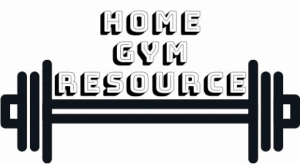Resistance bands come in quite a few shapes, colors, and sizes. The colors tell you which ‘weight’ they are but the shapes and sizes require a bit more explanation.
There are six main types of resistance bands:
Let’s dive into the specifics of every type of resistance band, what they’re for, and which ones should get for your purpose.
Types Of Resistance Bands
1. Tube Resistance Bands
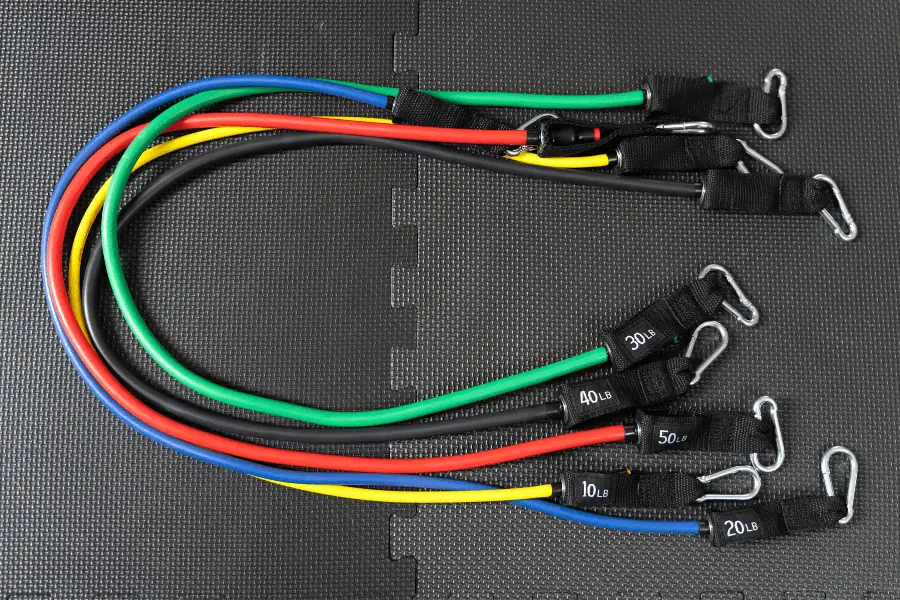
Tube resistance bands are long, cylindrical bands with handles or other attachments on each end. They often come with varying levels of resistance.
Tube bands are used with attachments. Other bands you can grip anywhere and get the width or length you need. Tube bands are a bit too thin to comfortably get a good grip, unless you wrap them around your hands.
That means you’ll use the attachments pretty often and also an anchor point on the wall or somewhere else. This makes them useful for many pushing exercises and exercises that are better with a certain attachment.
Ideal Exercises: Tube resistance bands are excellent for exercises like bicep curls, shoulder presses, and squats.
Suggested post: Resistance bands with handles or loop bands; what’s better?
Suggested: Can resistance bands break?
2. Latex Loop Resistance Bands
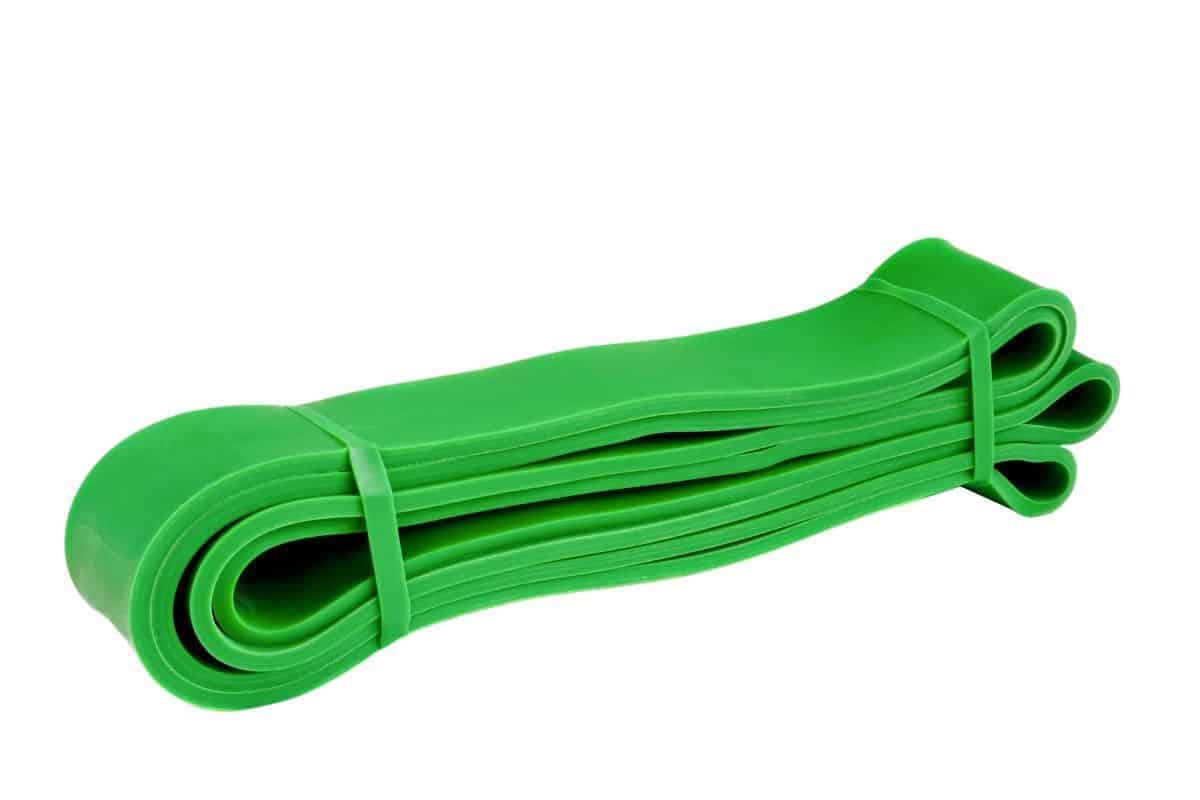
Loop bands are basically big rubber bands. They are about 1″ wide and 0.25″ thick although the exact size depends on the brand and how ‘heavy’ they are.
This type of band is very versatile. With some creativity, you can do almost everything you can imagine. You can attach them to anchors for pressing exercises, step inside the band for squats and shoulder presses, etc.
If you only want to buy one type of band, this is easily the best one to go for. Versatile, cheap, and simple to use without any other equipment except maybe an anchor point.
Ideal Exercises: Loop bands can be used for many different exercises like: Squats, curls, chest presses, tricep extensions, and much more.
3. Fabric Resistance Bands
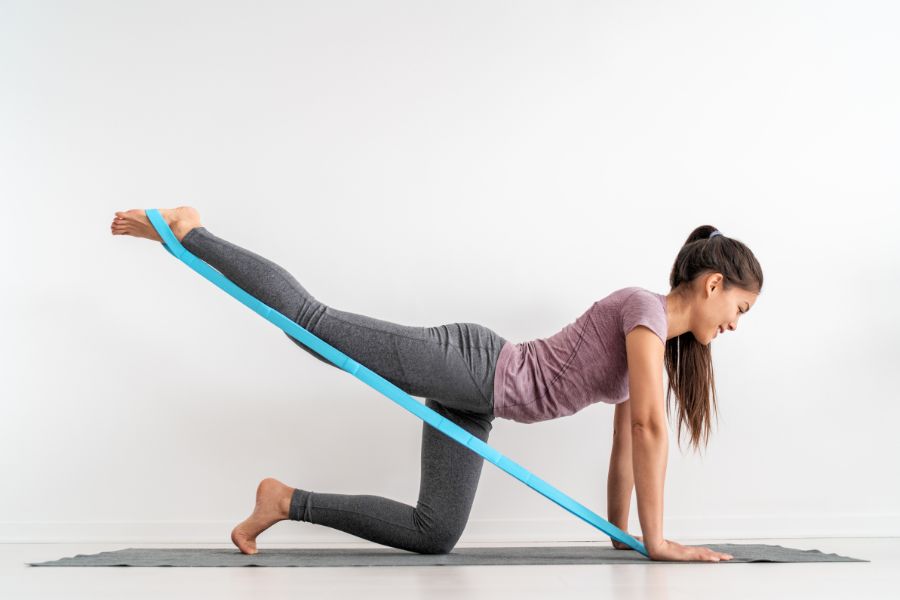
Fabric resistance bands, also known as fabric resistance loops or cloth resistance bands, are a type of exercise band that is becoming increasingly popular in the fitness world. These bands are made from fabric or cloth material and are designed to provide resistance for a wide range of exercises.
Fabric resistance bands come in both loop band and mini band sizes so pick what suits your needs.
They are about the same length as loop bands but the sides are stitched together in different places so you don’t have one large loop but rather a series of small loops that can be used to put feet or hands through.
The fabric tends to be much more comfortable than latex bands and they also stay in place better. On top of that, fabric resistance bands have a longer life expectancy than latex ones. And while they’re slightly more expensive, the difference is quite small and well worth it.
4. Mini Bands
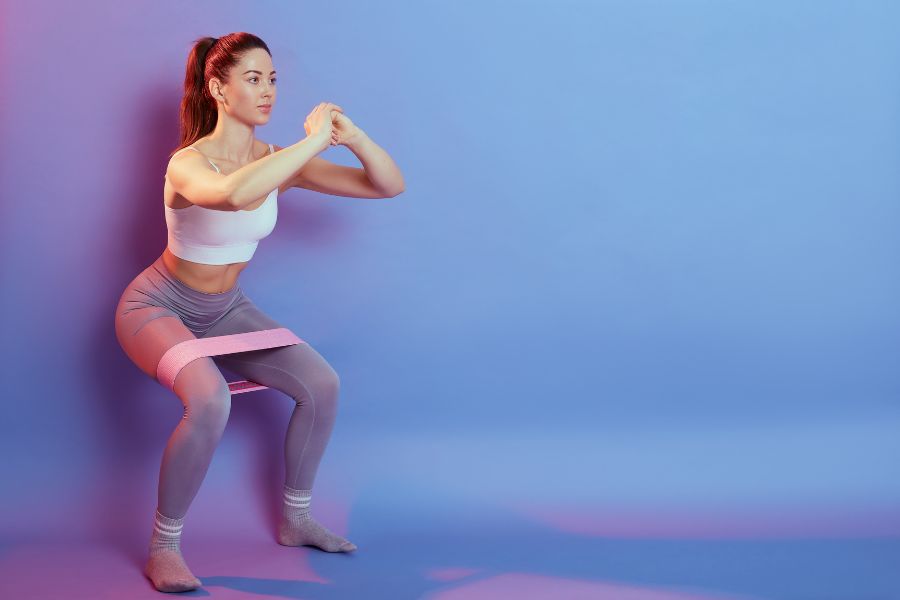
Mini bands are short yet wide and flat resistance bands. Mini bands serve a pretty specific purpose. They are useful for exercises where you have a relatively small range of motion. Usually, they’re used wrapped around the knees or thighs.
They’re great for correcting your form on certain exercises. But also to add a different resistance to lunges.
If you’re specifically looking to correct certain things in your form or for specific exercises, mini bands are good to have. However, for general purposes, the normal loop bands are better.
Ideal Exercises: Mini bands are ideal for squats, hip bridges, and lateral leg raises.
5. Figure-8 Resistance Bands
A much rarer type of resistance band is the figure-8 band. Figure-8 resistance bands resemble the number eight in shape with handles on both ends.
Figure-8 bands are shorter than loop bands which means you can use them for other exercises or in different ways. These bands make it easy to do back pull-aparts, bicep curls, or lateral raises. You can compare these to the old-school springy exercise contraptions your granddad used.
You might think that you could use mini bands in a similar way but those are a bit different. Mini bands don’t stretch as much which makes it difficult to do exercises with longer ranges of motions like bicep curls.
Ideal Exercises: Figure-8 bands are excellent for lateral raises, pull-aparts, and bicep curls.
6. Therapy Resistance Bands (Therabands)

Therapy bands are wide and flat pieces of elastic material. Usually they’re about 5′ long and 1′ wide. They are not a loop or tube, they’re just flat. Therapy bands are pretty versatile. They are comparable in usability to loop bands except someone cut them open and they’re much thinner.
These can be a bit more comfortable to use than loop bands because they’re wider so the weight is spread out more. These bands don’t usually offer the high resistances that loop bands can. They also can’t be anchored so they’re not as versatile.
Therabands are often used for physical therapy and rehab as the name suggests. They are made to provide gentle resistance while being comfortable and unlikely to put too much stress on any body part.
Therabands are perfect for physical therapy exercises, shoulder stretches, and gentle strength training routines.
Which Type of Resistance Band Should You Get?
Full Body Workout
For a full-body resistance band workout, the first type of band to get is a set of tubes. These are easy to hold and can be used for pretty much all upper-body and most lower-body exercises. Add some mini bands for the lower body and you’ve got a set that can give you a great full body workout.
Upper Body
For a good upper body workout, a set of tube bands is the way to go. Tube bands have handles and sometimes the option to use other attachments as well. That means they’re easy and comfortable to hold which helps a lot when pushing hard with your upper body.
You’ll need an anchor point to use these bands effectively for an upper-body workout. Once you’ve sorted that out, it’s easy to do all kinds of pulls, pushes, curls, flies, raises, and more.
Lower Body
For lower body exercises, choose a loop band. Either a latex or fabric one. You can use those for squats, lunges, leg extensions, and more. While you can also use tube bands for the lower body, loop bands have the benefit that you can rest them on your shoulders which takes some stress off the arms and hands, especially since for the lower body you’ll use stronger bands.
On top of that, it’s a good idea to get some mini bands to get some extra activation out of the glutes and hips.
Warm-up
Many people use bands to warm up before going into heavier exercises. Especially shoulders are a very common body part to warm up this way. You can really use any band except mini bands for this purpose.
For a very comfortable experience, use Theraband but loop bands also work perfectly fine as long as the resistance is not too high.
Combined With Barbells
Combining resistance bands with barbell exercises is a great way to change the resistance curve of the exercise and get more muscle and/or strength gains out of it. The right bands for this are loop bands. Either the full-sized ones or mini bands depending on the exercise.
If the bands are too long, you can wrap them around the bar and peg multiple times. Just be aware you’re doubling the resistance every time you wrap it around so use a lighter band if necessary.
